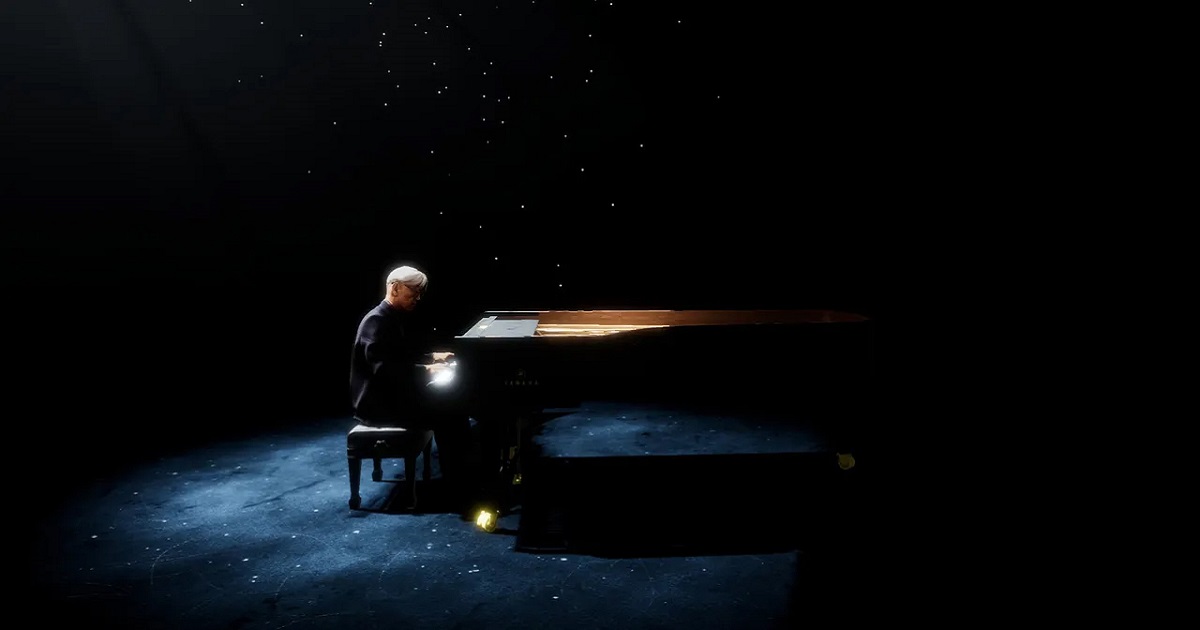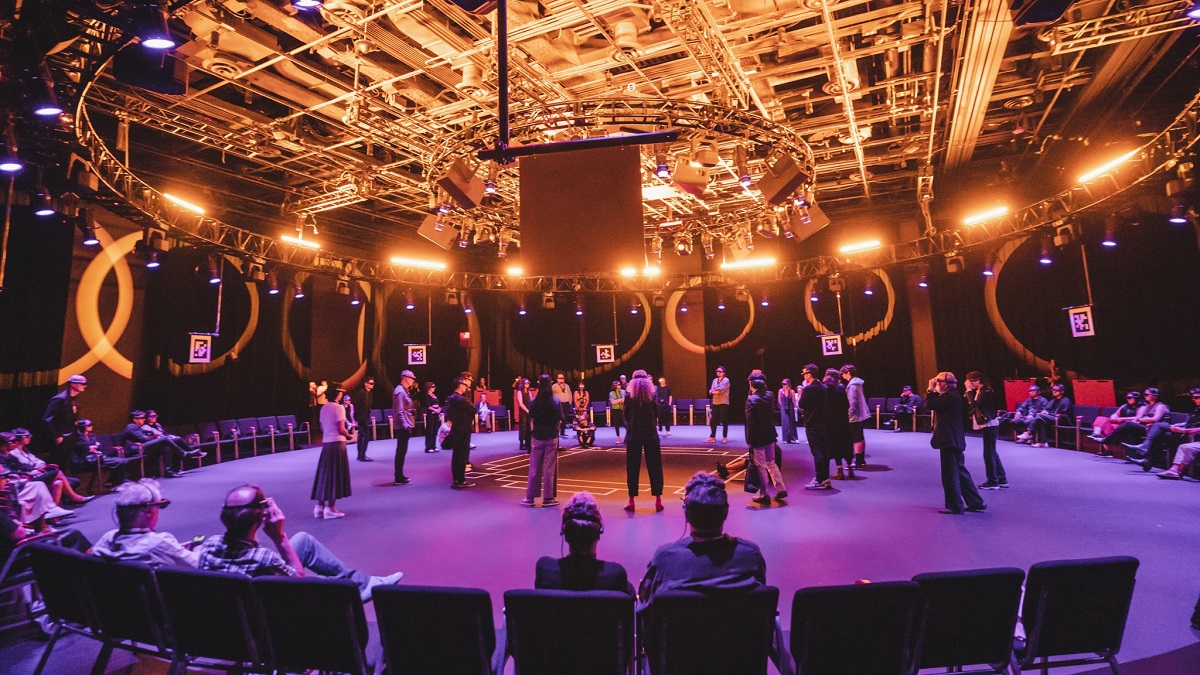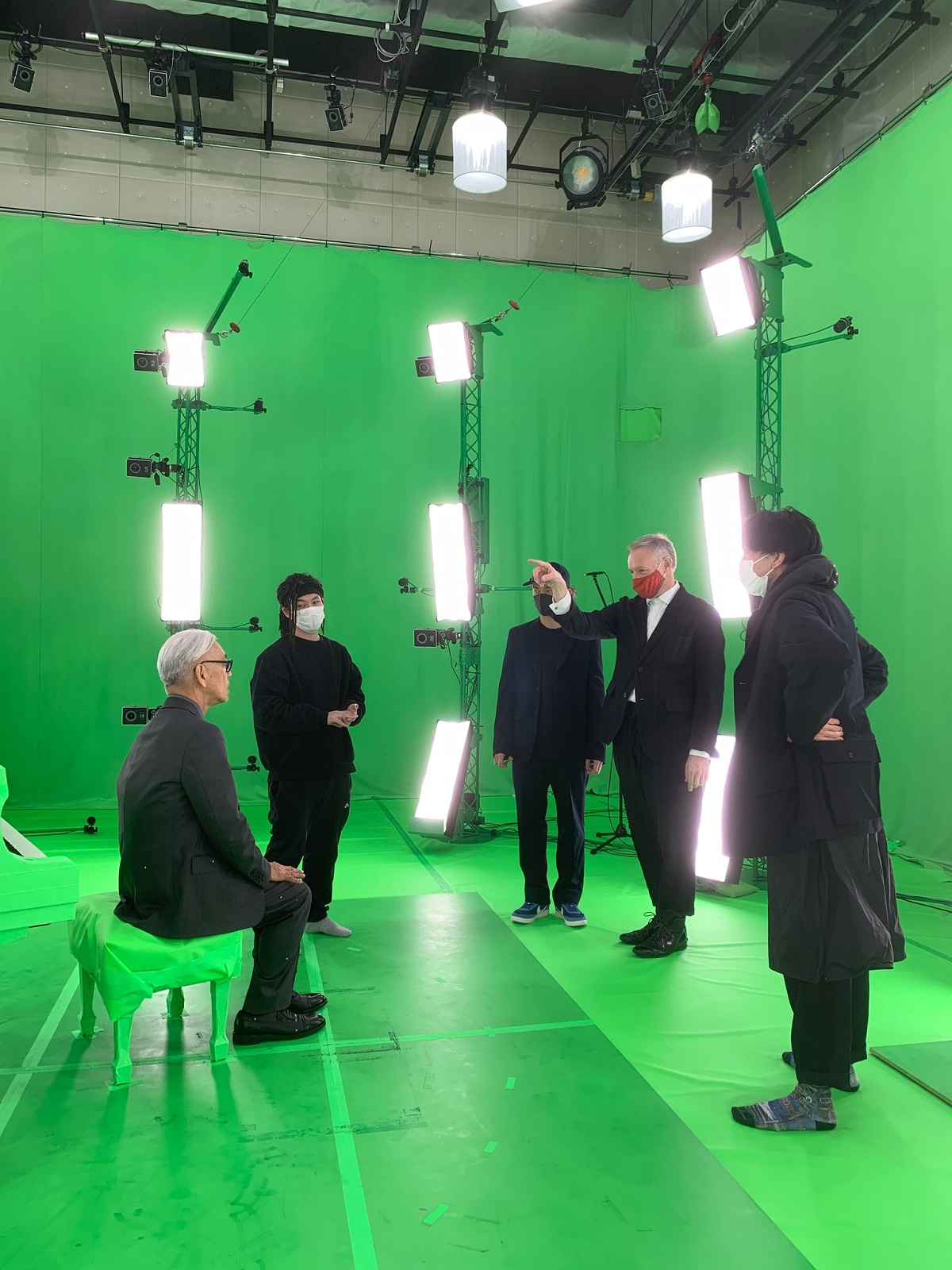TL;DR
- “Kagami” is a mixed-reality presentation showcasing the performance of late composer Ryuichi Sakamoto created by Tim Drum and directed by Todd Eckert.
- The Japanese Academy Award-winning composer for “The Last Emperor” died earlier this year, but has been resurrected as a hologram via mixed reality goggles for limited theatrical runs.
- Wired writer Elissaveta Brandon judged the result “an experience that feels material and ethereal at once.”
READ MORE: Ryuichi Sakamoto’s Final Performance Is a Virtual-Only Engagement (Wired)
The latest art-meets-tech experience presents the late Ryuichi Sakamoto in a digital concert.
The Japanese Academy Award-winning composer for The Last Emperor died in March at the age of 71, but he has been resurrected as a hologram for a special theatrical experience viewable in situ at New York’s The Shed using mixed reality goggles.
Called Kagami, which translates to “mirror” in Japanese, the production was a five-year work in progress with Sakamoto and is directed by Todd Eckert, a former content executive at Magic Leap.

Following its debut at The Shed, the show went on tour with scheduled stops at the Big Ears Festival in Knoxville, Tennessee and the Manchester International Festival in the UK, continuing in 2024 to the Sydney Opera House.
Sakamoto’s performance of 10 solo piano pieces was recorded in a volumetric capture system, but the artist died before the project was completed at mixed-reality studio Tin Drum.
According to Wired, it took about six months for Eckert’s team to process the raw data captured in the session. In the meantime, they also had to sculpt Sakamoto’s hair from scratch and recreate his iconic glasses. But the most challenging thing to recreate was Sakamoto’s face, which was blocked from the cameras for a large part of his performance because he was hunched over. The team had to make up for the missing data by reconstructing his face using referencing segments of complete data.
What of the 45-minute show itself? The show begins with 80 people sitting in a circle around absolutely nothing. After each concertgoer has slid on a Magic Leap 2 headset, a virtual Sakamoto appears in the center of the circle. The musician then performs while guests can move “around” him.

Forbes writer Charlie Fink attended and reports that when Sakamoto’s hologram, ends a piece, there is silence. “One person claps before they realize this is not a live performance.”
In one piece, a tree grows out of the piano and its roots go far beneath it below the floor, Fink describes. It dissolves into stars, the milky way, and soon we find ourselves standing above the earth as seen from space. In another composition we’re surrounded by iconic New York images: skylines, bridges, unexpected terracotta lions. Other times, Eckert shows the viewer black and white warplanes flying in formation and other iconic World War images.
READ MORE: KAGAMI Live Mixed Realty Show Begins Limited Theatrical Run (Forbes)
Fink says he shed a tear, and Wired’s Elissaveta Brandon judged the result “an experience that feels material and ethereal at once.”
Brandon found the headset’s 70-degree field of view limiting and also tricky to get used to, “considering you’re walking around in a room full of strangers wearing the equivalent of dark sunglasses.”
She ponders whether a mixed-reality concert can ever make up for the sad reality of someone’s absence. What do we lose when technology becomes so integral to the most intimate of human experiences — and what do we gain?

“Replicating the unique energy and atmosphere that stems from the collective presence of performers and the audience being in the venue together is another challenge,” she writes.
“This is only partly addressed in Kagami, which may be designed for a small crowd to take in together, but remains a mostly solitary experience.”

